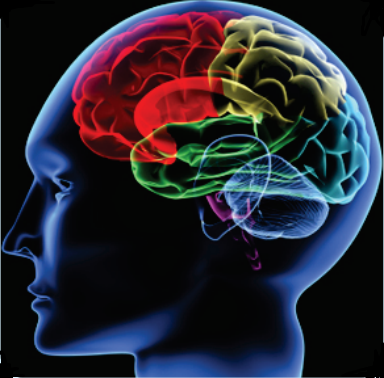ADHD is characterised by a pattern of decreased sustained attention and higher levels of impulsivity in a child or adolescent than expected for someone of that age and developmental level.
Current consensus is that the etiology of ADHD involves complex interactions of various neuroanatomical, neurochemical and familial systems. The suggested contributory factors include prenatal toxic exposures, prematurity and prenatal mechanical insult to the foetal nervous system.
Food additives, colourings, preservatives and sugar are proposed as the possible causes of hyperactive behaviour. Psychosocial factors like prolonged emotional deprivation, stressful psychic events, family problems, anxiety producing events, etc., could also lead to ADHD.
Children with ADHD exhibit higher rates of soft neurological signs. PET scan data shows lower cerebral blood flow and metabolic rates in the frontal lobe areas of children with ADHD than in controls.

Name: Rahul
Age: 8 years
Occupation: Student, ICSE
Chief Complaints
- Unable to sit in the classroom
- Unable to finish his school work
- Poor academic performance
- Poor attention
- Disruptive behaviour
Case History
Rahul’s mother described him as a very restless child. He would climb on the table, kick the walls, stand on the windowsill and fall from the bed.
At school, though described by the teachers as a very bright and lovable child, he would always be in trouble. He would pull other children’s hair, would frequently get up and many times would run out of the class. He was unable to concentrate or complete his books, thus, faring poorly in exams.
Rahul’s behaviour was also causing conflicts at home. His parents were often blaming each other for being responsible for his behaviour. Moreover, his grandmother would always pamper him. Rahul’s mother started developing a lot of negativity towards him.
Mental State Examination
Rahul kept kicking and going round in the rotating chair at the clinic. He grabbed all the pens, started scribbling on some papers till he lost interest, and then climbed on the couch to gaze out of the window.
Diagnosis
The Conners Questionnaire, which is used to diagnose Attention Deficit Hyperactivity Disorder (ADHD), was sent to his parents and class teacher to confirm the diagnosis of ADHD. A detailed assessment and clinical evaluation was done. Differential diagnosis of oppositional disorder, anxiety disorder, mania, Tourette’s disorder, learning disability, etc., was ruled out. The nature and course of ADHD was explained to his parents in details. They were also advised to think and read about all the side-effects of the treatment.
Treatment
Rahul’s height, weight, pulse and BP were noted. A baseline TSH, ECG and other routine tests were done.
During the next visit, with his parent’s consent, the child was started on Methylphenidate and dose was tritrated on a weekly basis. Alongside, a Clinical Psychologist started him on Antecedent-Behaviour Analysis and Behaviour Therapy Programme. Besides, Couples Therapy was also done to sort out the differences in the marriage for his parents. Later, Family Therapy was started to involve his grandmother in the treatment to make her aware of the importance of consistent discipline for the behavioural issues that Rahul faced. Occupational Therapist was involved for the sensory-motor stimulation programme, along with attention enhancement strategies.
Follow-up
Two months later, a smiling and calmer Rahul walked in with his happy and proud parents, showing his report card which had three A grades and two A+ grades. There was a marked improvement in his concentration, impulsivity and behaviour, and now, he was selected as the Monitor of his class!
 Back to Site
Back to Site